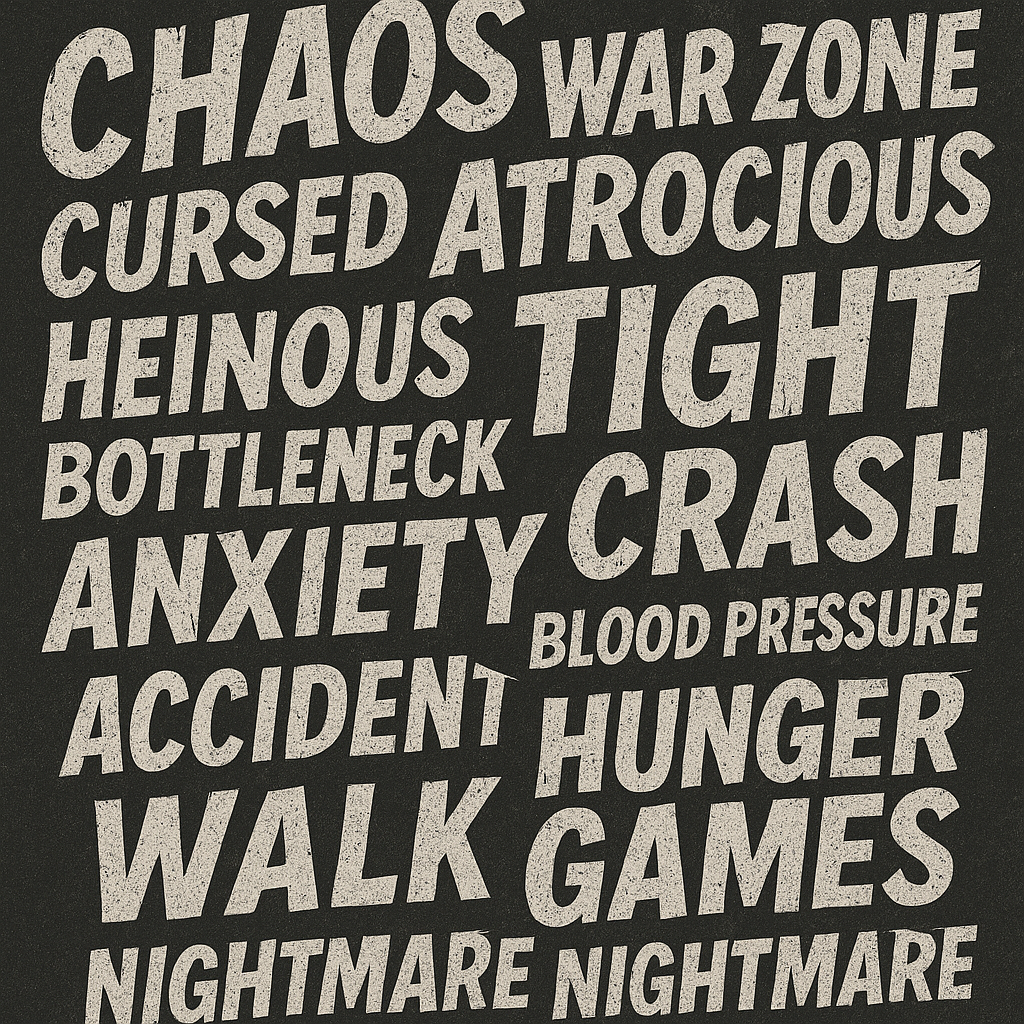
I Fed Trader Joe’s Parking-Lot Complaints Into an AI Model. The Results Were Unhinged.
The other day, I started thinking about Trader Joe’s parking lots after seeing a post on LinkedIn mentioning them. The mere reference of those abominations causes my Apple Watch to alert me about an abnormal heart rate. Ok, yes, I’m being dramatic — but it made me wonder how I could turn the chaotic, hair-pulling rage of those lots into a post about how AI can take something ridiculously human and turn it into patterns, personas and visual chaos… ultimately revealing why we laugh about it in the first place.
(Yes, this is my idea of fun. I’ll take all party invites starting… NOW.)
Trader Joe’s parking lots are a well-documented internet trope. Everyone swears theirs is the worst. The misery has united us more than the almond Danish Kringle hoarding that marks the beginning of holiday season. Altogether, it felt like the perfect microcosm of human behavior for an AI experiment. So, I did what any normal person does: I went all in.
What I did: I compiled a bunch of parking-lot reviews, comments, tweets and rants into a Word doc, then fed them to AI to see what patterns emerged. I quickly learned two things:
- Humans are freaking hilarious.
- Making fun of these parking lots is practically an American pastime.
Some highlights:
- “I refuse to shop at mine because the parking lot is a war zone.”
- “Every TJ’s parking lot is cursed.”
- “My blood pressure skyrockets the second I turn in.”
People have gotten into fender-benders, experienced existential crises, had full-on (valid) crash-outs and undergone philosophical reckonings in these lots. One commenter truly killed me: “I took a class once where we had to write our own obituary, and I said I died in a Trader Joe’s parking lot.”
What the AI Found (a.k.a. The Five Emotional States of a Trader Joe’s Parking-Lot Human)
Despite the wildly different comments, AI kept clustering the same five emotional tones. Here they are — with my commentary added for, well, humanity.
Chaotic Neutral Despair
“Why is every Trader Joe’s located in the smallest parking lot known to man?”
These people aren’t mad or sad. They’re simply… defeated. Their spirits are destabilized. I’m getting Charlie Brown vibes.
Existential Comedy
“I found a parking spot and will now be living in it to celebrate.”
These people laugh through the agony. They’ve achieved enlightenment. Honestly, we could all learn a thing or two from them.
Urban Hunger Games
“Worst parking lot in Los Angeles. Possibly the earth.”
This cluster radiates competitive survival instinct. Every day is Black Friday in a Trader Joe’s parking lot.
Walkers by Choice, Not for Fitness
“I’d rather walk with a wheeled bag than deal with that lot.”
Here we see self-preservation mixed with passive-aggressive bragging. They want to participate in the discourse but from a safe perimeter.
Trauma Bonding
“If you didn’t almost crash, did you really go?”
They’re not complaining — they’re reliving. I imagine them meeting up later, sitting around a campfire, sharing harrowing stories.
AI-Generated Behavioral Archetypes
Once the model saw the patterns, it spit out six very distinct parking-lot personas:
1. The Circler: Lives life like a Roomba with free will. They firmly believe that “one more lap” will produce a spot. That’s some glass-half-full energy.
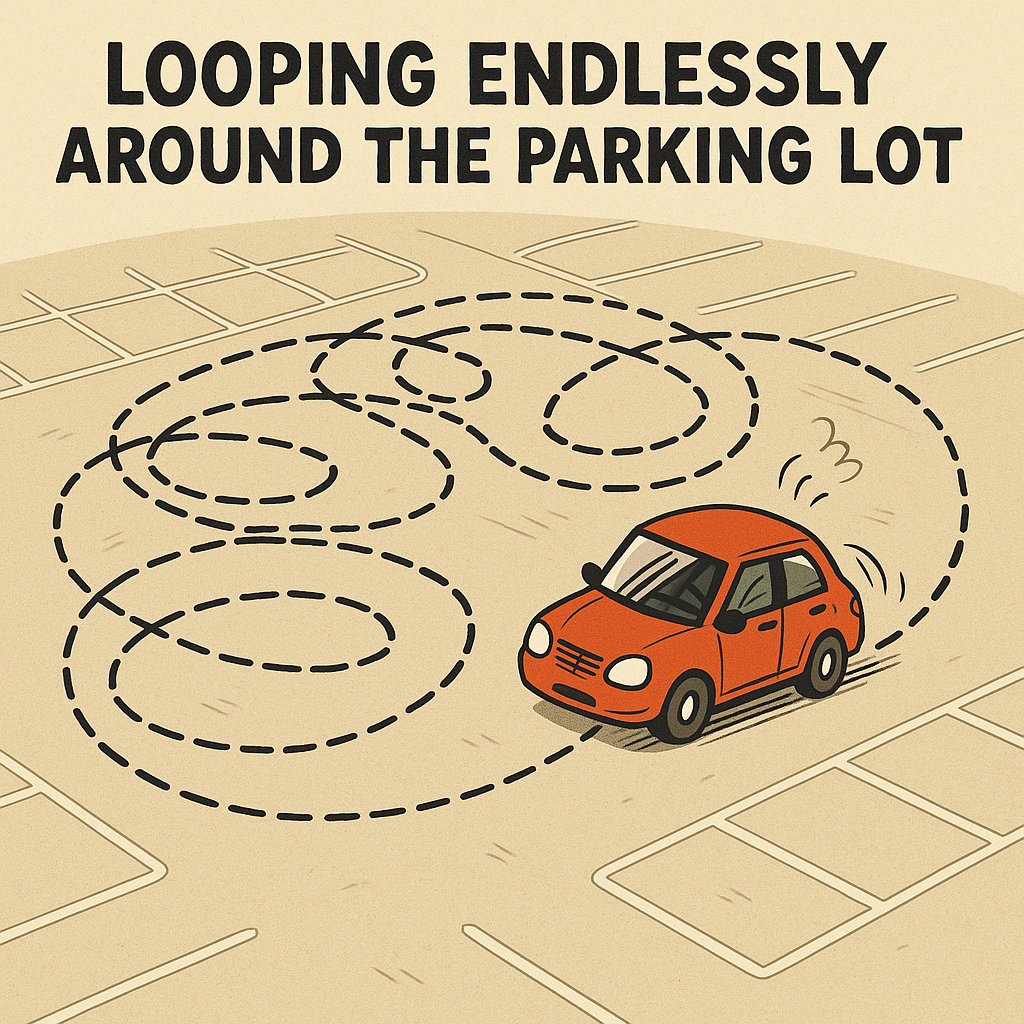
2. The Spot Sniper: Idles like a documentary wildlife photographer waiting for a rare bird to reverse. They’re in it to win it and will absolutely block three lanes to get The One.
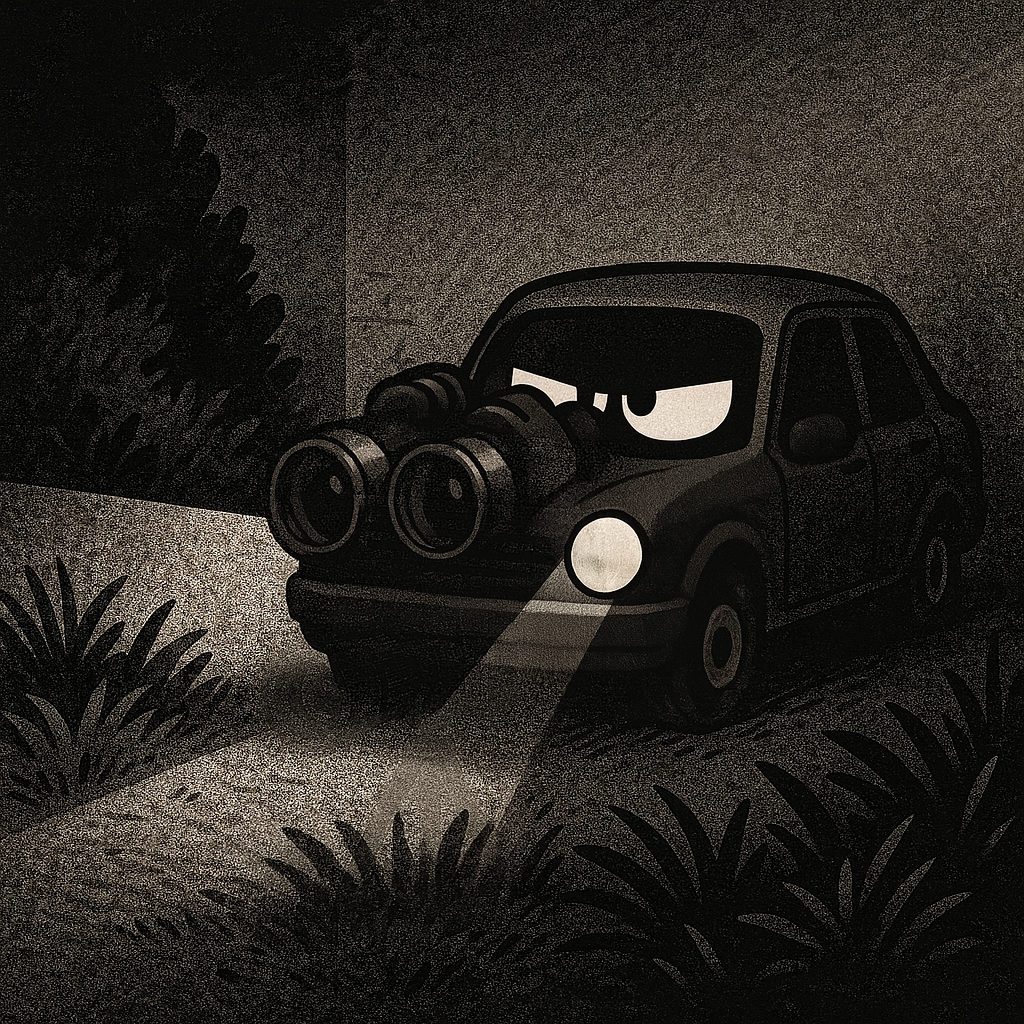
3. The Reverse-Out Gambler: Begins backing out with zero warning. Inspires hope, fear, and adrenaline — in that order.
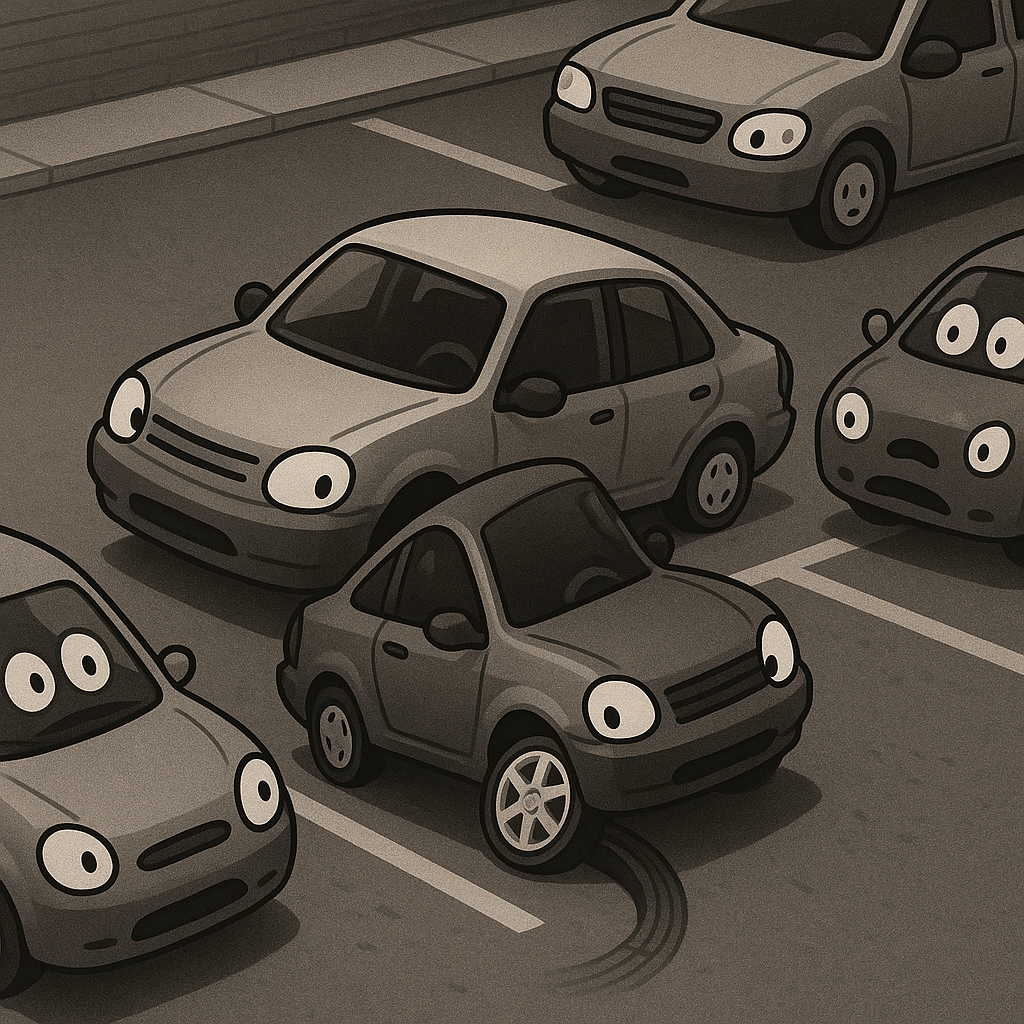
4. The Walk-It Warrior: Not a fitness person. Just someone who has seen enough and refuses to re-enter that lot.
5. The Existential Park-and-Pray: Approaches an open spot like a hallucination. Doesn’t believe in happiness — only temporary relief.
6. The Stare-Down Duelist: Locks eyes with you over a contested spot. Lives for drama. Fueled by spite and seasonal snacks. Let them have the spot.
The AI Visualizations: Where Science Meets the Fever Dream
1. The Chaos Heatmap: The AI produced a heatmap that looked like a wildlife migration study. Peak congestion was exactly where you’d expect. It looked both scientific and like the veins of an overworked, stressed-out heart. And yes — dragons appeared. Might as well lean into the chaos, I suppose.
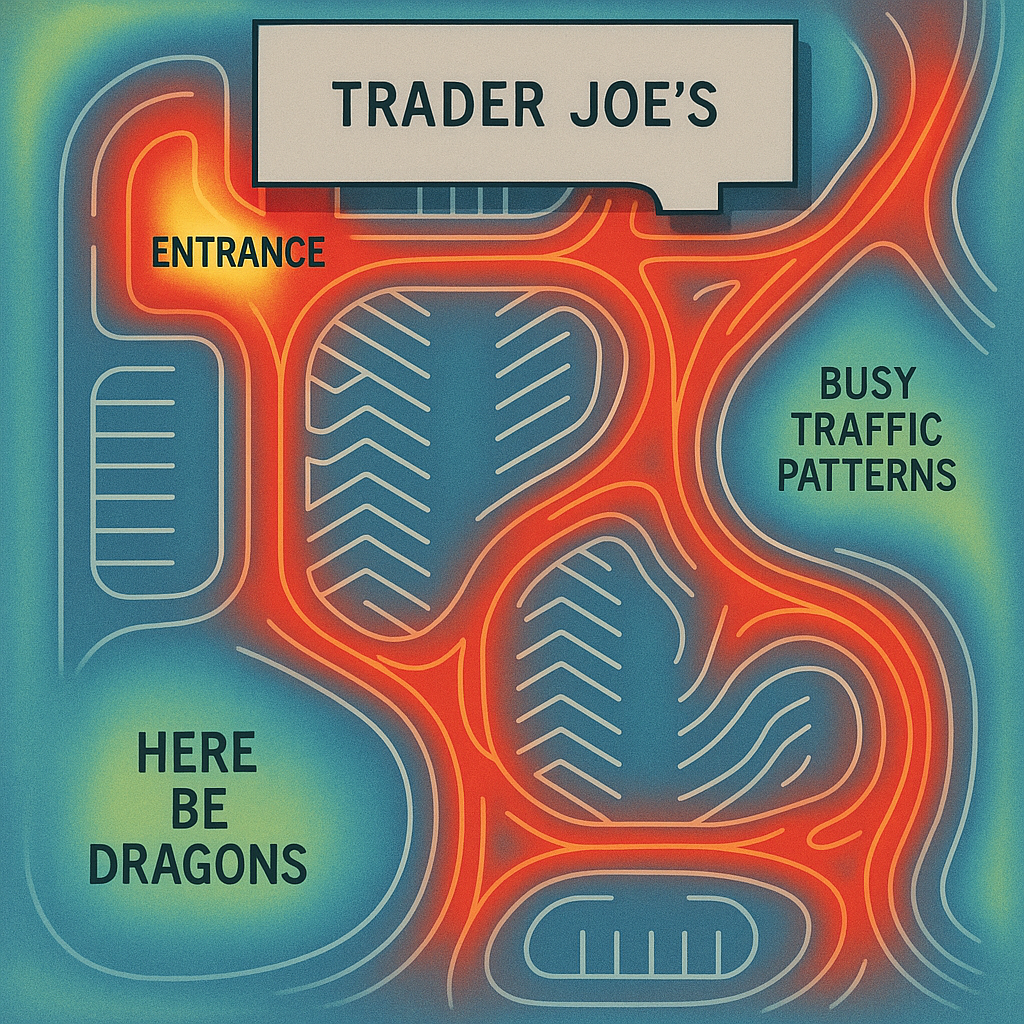
2. The “Optimized” Parking Lot Design: Oh, AI. I asked it to design the perfect TJ’s parking lot. It gave me a four-layer corkscrew ramp, stacked roundabouts and something resembling a highway interchange designed by M.C. Escher. Technically functional? Maybe? Emotionally abusive? Yes.
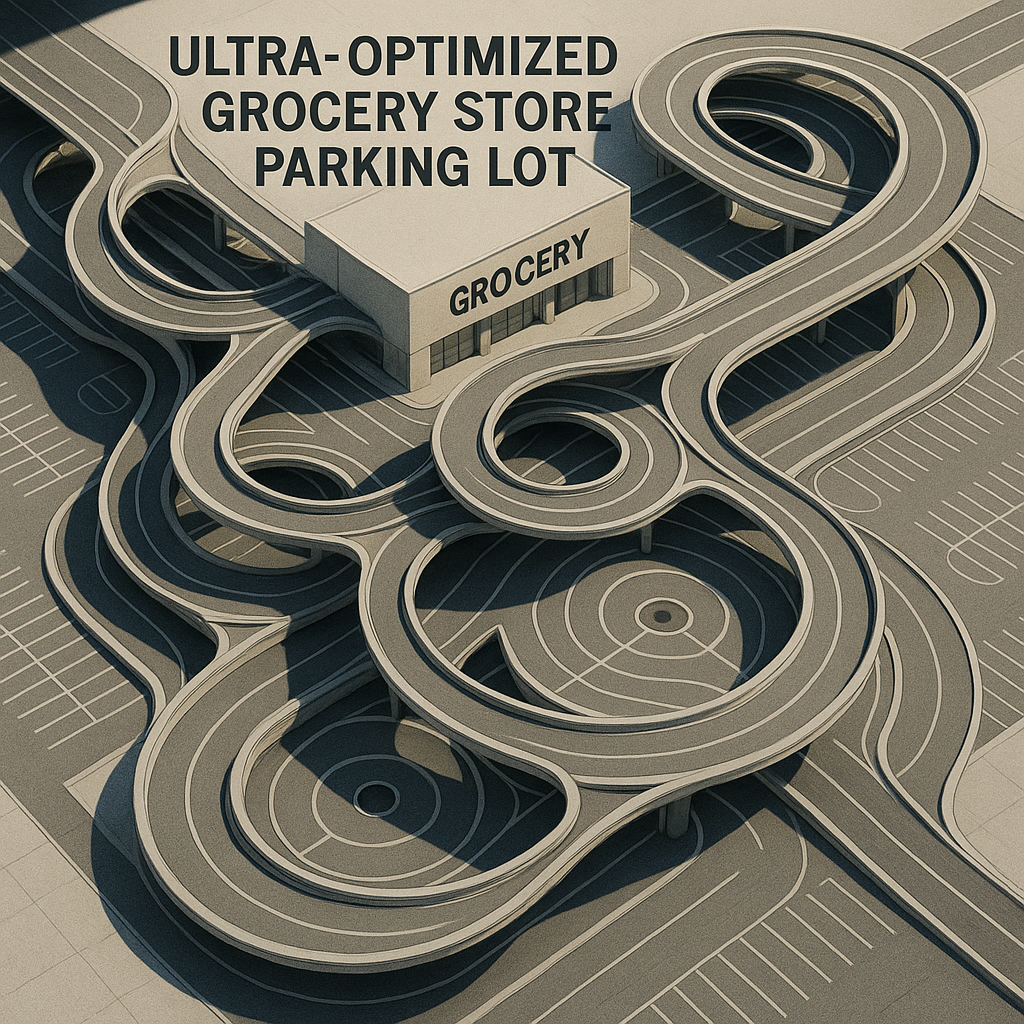
So… What Did AI Actually Reveal?
Here’s my big insight:
Trader Joe’s parking lots aren’t just poorly designed. They’re a cultural ritual built on scarcity, chaos and hope. And honestly? That tracks.
We don’t just endure the chaos — we bond through it. We complain, laugh, meme and keep going back. It’s part of the Trader Joe’s experience now.
“So, you did this for fun, Daniele?” I know it’s hard to believe, but yes. And underneath the nonsense, it’s also a lesson I can apply in my everyday marketing job: I took negative sentiment and transformed it into entertainment and insight — which is exactly what brands should do. Real emotional patterns are hiding inside real comments. Clarity is gold. And archetypes? They give life to better personas, targeting and messaging. I’d much rather solve for these characters than a bland “value-conscious shopper,” thank you very much.
Humor lowers defensiveness. Shared suffering creates connection. And revealing deep human truths in a ridiculous, delightful way is how marketing becomes fun — and memorable!
I could keep going, but it’s 9:16 p.m. on a Sunday night. As fun as this is, I need to go to bed.
So while AI didn’t solve the parking-lot crisis, it did make one thing clear:
the chaos is part of the ritual, and the ritual is part of why we love it.
And if Trader Joe’s ever wants help redesigning things, I’ll be outside in the lot — staring someone down. That spot is mine.

Post a comment